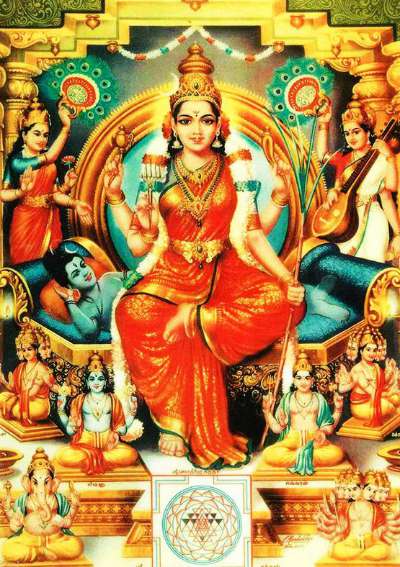Lalita Sahasranama is a text of Brahmanda Purana and is a sacred one to Hindu worshippers of Goddess Lalita Devi (Goddess Durga). Lalita Sahasranama contains thousand names of the Goddess organised in the form of hymns or stotras and it is the only Sahasranama that does not repeat a single name.
Lalita means, ‘She who plays’ and is the Goddess of bliss and consort of Lord Shiva. She is described as extremely beautiful, having dark thick long hair with the scent of Champaka, Asoka and Punnaga flowers. She has thilaka on her forehead, eyelids that are beautiful and her eyes like fish playing in the lake of her face. She has a nose with studs that shine more than the stars, ears with the sun and moon as studs, beautiful rows of white teeth, with a beautiful smile that Shiva himself could not take his eyes off her.
Lalita Sahasranama is said to have been composed by eight vaag devis namely, Vasini, Kameshwari, Aruna, Vimala, Jayinee, Modhinee, Sarveshwari, Koulini upon the command of Lalita. The Sahasranama says that “One can worship Lalita only if she wishes us to do so” and the Sahasranama text is a dialogue between Hayagriva, (Mahavishnu) and the sage Agastya. The temple at Thirumeyachur, near Kumbakonam is where Agastya was initiated into this Sahasranama. Another version states that this Sahasranama initiation happened in Upanishad Bramham Mutt at Kanchipuram








